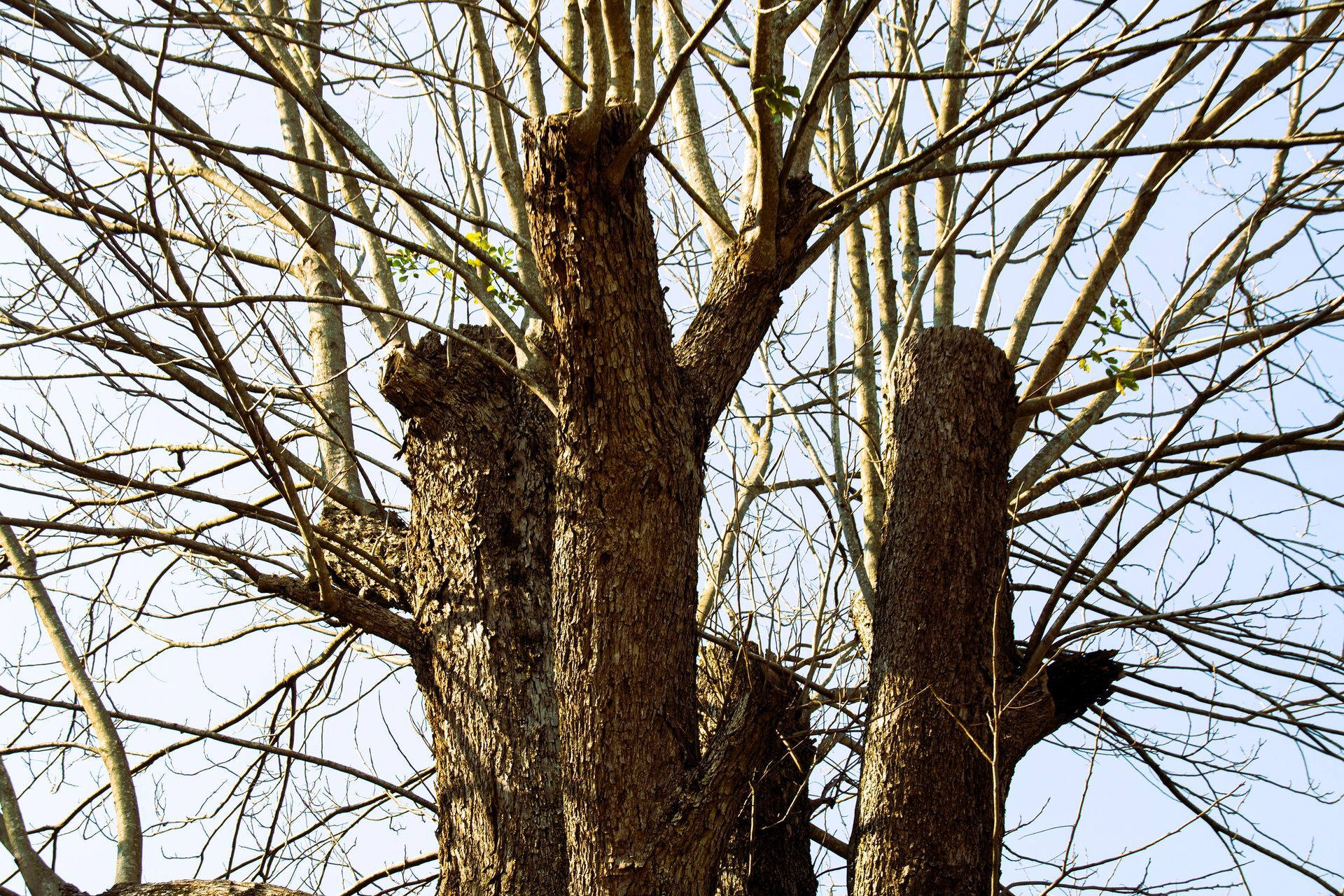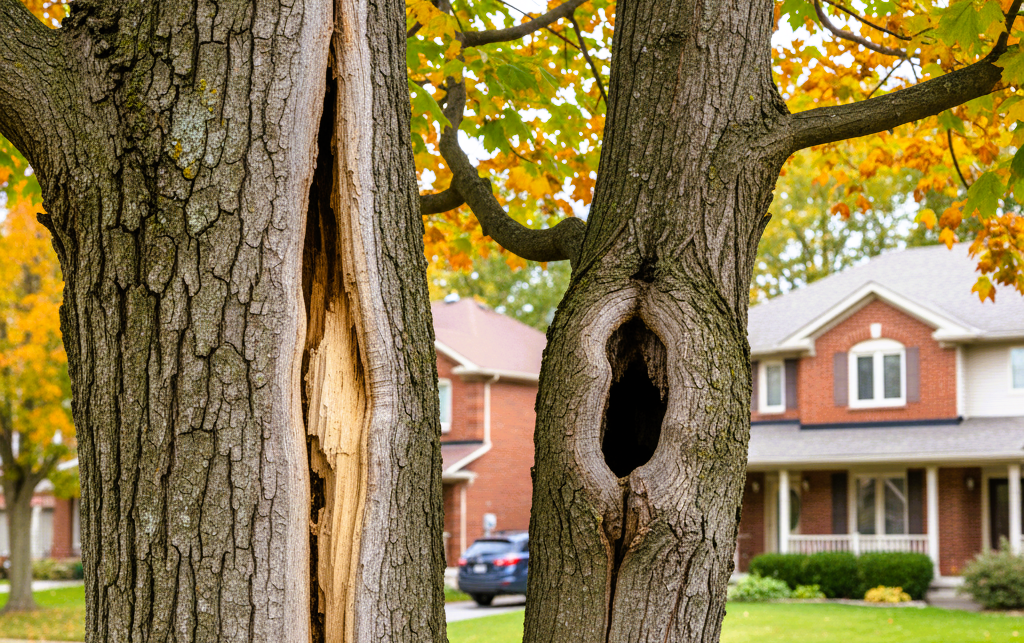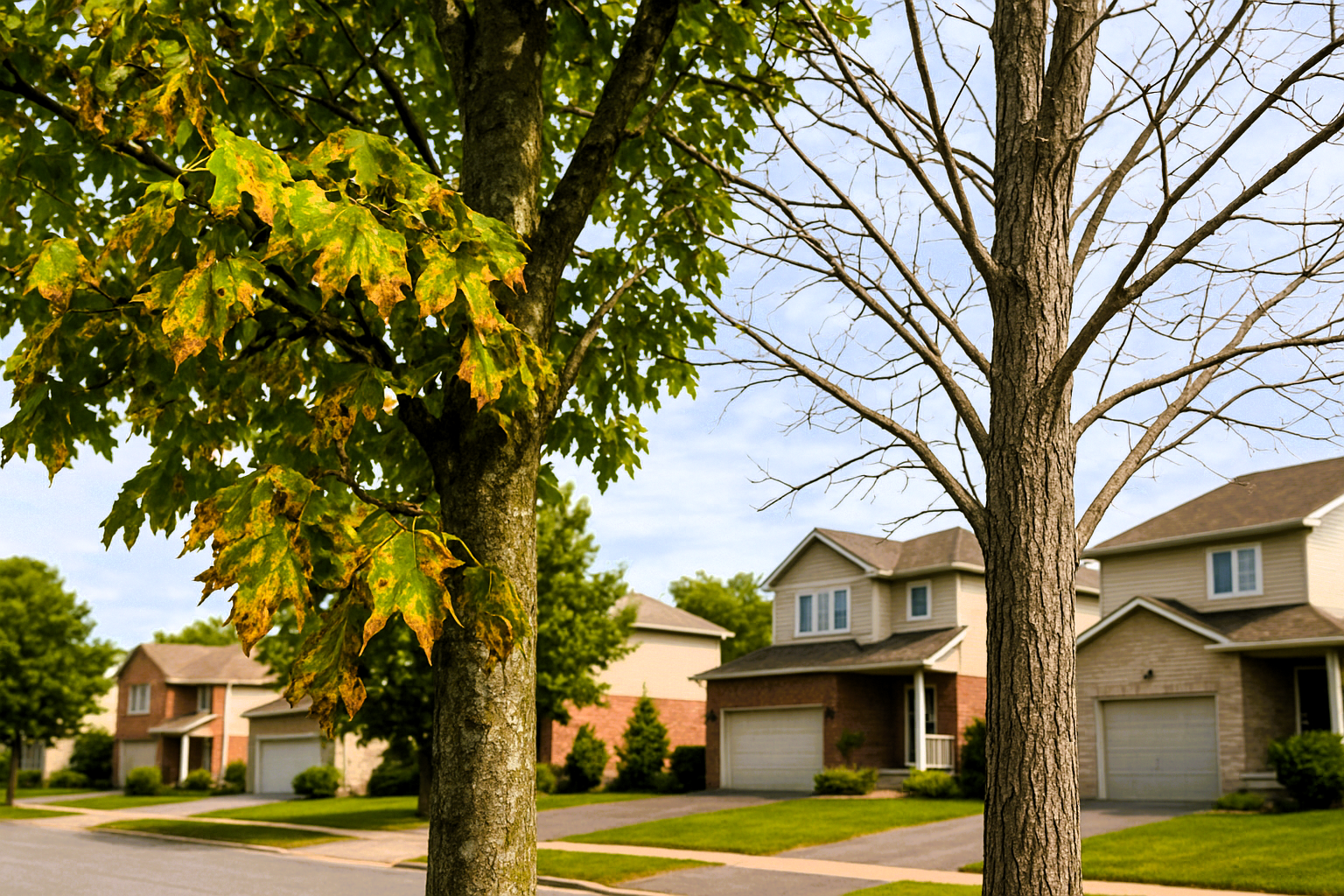3 Signs That You've Over-Pruned Your Trees
Have you over-pruned your trees? Here are the signs to look out for

If you want your trees to stay healthy, lovely, and in good condition, you need to prune. Pruning correctly stimulates your plants to grow and keeps them free of diseases. Neglecting to prune, in contrast, is problematic, so it is good to be able to recognize if your trees are being over-pruned.
In this article, we will outline three obvious signs of over-pruning, tips to avoid these mistakes, and the key reasons for using professional pruning companies.
1. Stunted Tree Growth
Moss growing on crooks and crotches is a sign of over-pruning, as is a tree growing more slowly than usual. Pruning reduces the number of branches and leaves the tree has to sustain itself. Chop off too many, and the tree might need more nutrients, leading to poor or even stunted growth.
There is a right way and a wrong way to prune, and a wrong time as well. For instance, if you practice pruning on a species like the Japanese maple that doesn't tolerate it, you are just stunting your tree's growth. Deciduous trees should only be pruned once they are dormant, so you will want to wait until late
winter or
early spring.
2. Less Foliage
If you remove the branches, a tree has fewer leaves to harvest sunlight for energy. Visible light, including infrared light from the sun, is absorbed by chlorophyll in a leaf and used to split water to produce oxygen and reduced carbon for energy in the process known as photosynthesis. A tree might die if you remove too many of its leaves and branches; they're both sources of energy.
Fewer leaves also mean that trees are more susceptible to diseases and
pests. A tree with smaller leaves has less surface area, which weakens the tree's natural defenses and makes it easier for pests and diseases to infiltrate.
To address this issue, prune only dead or broken branches and avoid removing more than one-fourth of the tree's canopy in a single season.
3. Increase in Interior Sprouting
If you see more growth inside your tree, called interior sprouting, it means you've pruned too much. The tree compensates for lost branches and leaves by growing new ones inside, which isn't good. Too much interior growth can crowd the tree, blocking airflow and sunlight. This can make the tree vulnerable to diseases and pests and interfere with its structure. To avoid this, only prune dead, damaged, or crossing branches.
Why You Should Consider Professional Tree Pruning
Yes, you can prune your trees yourself (the most cost-effective option). However, the tree may not look its best. For a healthy and attractive tree, hire a professional. They know the correct way and time for pruning each type of tree and come equipped with the right tools to do it properly and effectively.
A tree service company can also identify issues like disease or structural problems, resolving them before they worsen. Their expertise saves you time and effort while ensuring your trees' health and longevity.
Our certified arborists at Kanata Tree Service Masters provide exceptional tree care, keeping your trees healthy and beautiful with tailored services. Our professionals avoid over-pruning using the latest methods and technologies. Request a free consultation today!
Additional Tips for Effective Tree Pruning
By following the advice we've provided, you can maintain a healthy and vibrant collection of trees in your yard. Remember, timely and correct pruning is key. Here are some additional tips to keep in mind:
- Use sharp tools. If you use a dull blade, you may hurt the branches and not get a clean cut.
- Essential tip - the 3-cut: When you are pruning large branches, the 3-cut technique allows you to stop the wound from ripping out the bark.
- Make sure not to cut too deep: Be careful to leave at least a little branch collar where the cut meets the trunk so that the wound has something to seal over itself. Scars will be less likely to allow bugs to sneak in.
- Prune for structure, not for suture: Recall the tree's overall structure (or shape) – not just its appearance – when you prune.
- Watch the trees: Check your trees frequently for evidence of disease or pests. Identifying and addressing problems early can prevent extensive or ongoing damage.
If you consider these tips and watch out for the warning signs of over-pruning, your trees will remain healthy and strong for years to come.
Consult a Professional Tree Pruning Service
Recognize when too much pruning has been done, and avoid doing any harm to trees. To do that right, you must use a knowledgeable tree service. Having someone who knows what they are doing and keeping your trees healthy with proper pruning can provide the most benefit. Healthy trees are not just attractive but also beneficial for the environment and ourselves. So please keep track of your shade trees and get the expertise to keep them healthy when you need it.
Regular tree trimming on your property will have a positive impact on the appearance, safety, and value of your home!
Contact Kanata Tree Service Masters to schedule your tree pruning today.


